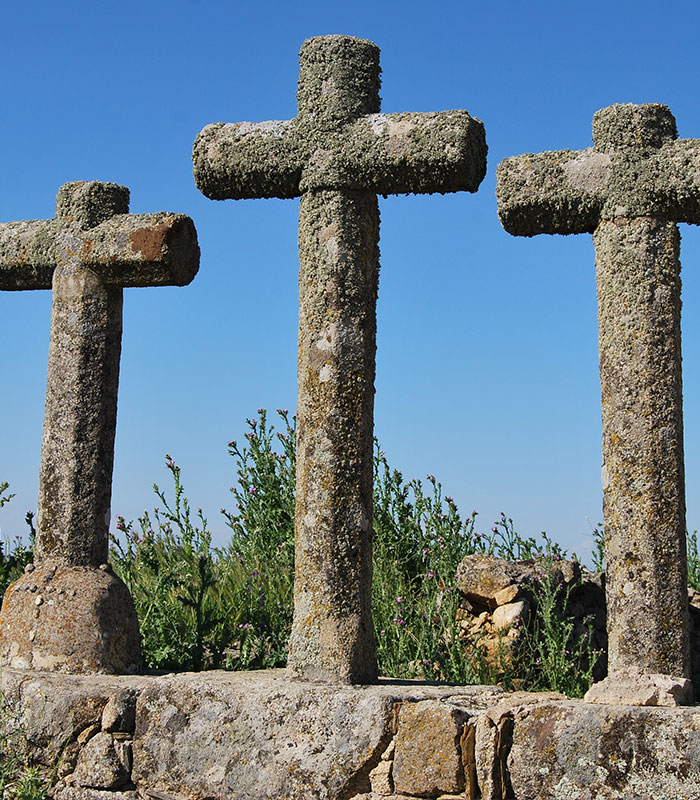The stations of the cross of Peraleda de San Román and Valdelacasa de Tajo are good examples of devotional monuments of Castilian tradition. Around them religious events were celebrated for centuries not only in Castile but also in areas under its influence such as La Jara, the most westerly villages of which belong to Extremadura and more specifically to the Villuercas-Ibores-Jara Global Geopark of the UNESCO.
The custom of following a route for the various stages of the Passion of Jesús originated in the Holy Land. It consisted of passing by each of the significant places from the arrest to the tomb and saying a prayer at each. From the 4th century in the times of Emperor Constantine a large number of pilgrims travelled to Jerusalem to perform this rite.
In the 17th century, given how difficult it was for the faithful to travel to the Holy Land, Pope Innocent XI gave the Franciscans permission to reproduce the penitential stations in their churches. In this way worship was extended to as many parishioners as possible.
Subsequently stations of the cross began to be constructed outside religious enclosures to become monuments in many towns and villages. Traditionally these consisted of fourteen stations which represented scenes of the Passion of Jesus from his being condemned to death to the tomb. Stations of the cross were generally erected on the outskirts of villages or on roads from the latter to a chapel or church. Even today their presence is linked in some cases to religious festivities, in particular those related to Easter.
